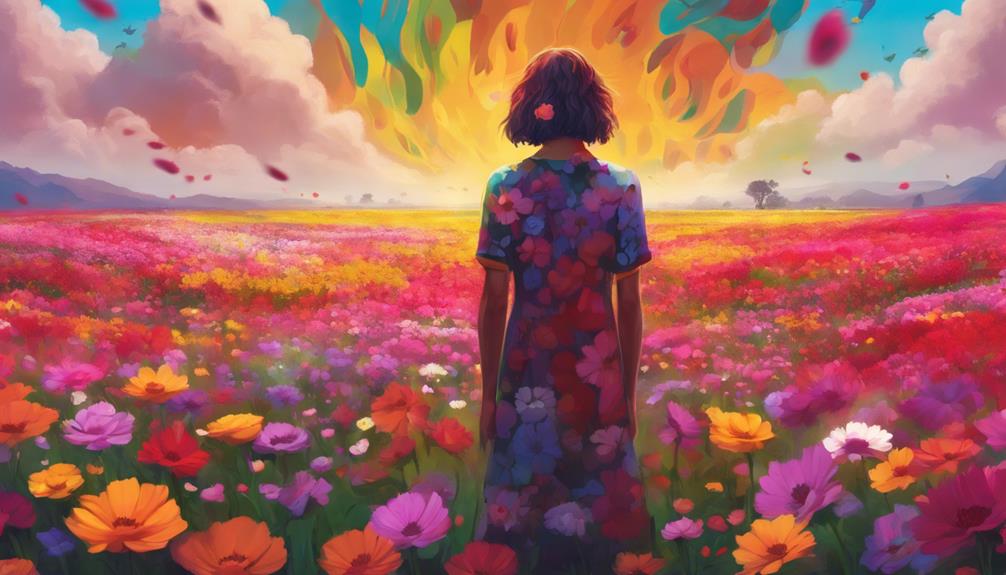The interplay between colors and our emotions is a fascinating subject that has intrigued researchers and psychologists for years. From the vibrant energy evoked by warm hues to the calming effect of cooler tones, colors have a profound impact on our psyche that extends beyond mere aesthetics. But how exactly do these visual stimuli influence our emotional state on a subconscious level? The answer lies in the intricate connection between our perception of color and the intricate workings of our minds, shedding light on the intricate dance between hues and feelings that shapes our daily experiences.
Key Takeaways
- Warm colors like red, orange, and yellow evoke happiness and boost energy levels.
- Cool colors such as blue and green promote tranquility and create serene atmospheres.
- Specific colors like purple convey luxury and creativity, triggering specific emotional responses.
- Different colors like pink, brown, white, and gray elicit varied emotions and perceptions in business and design.
Impact of Warm Colors

Warm colors such as red, orange, and yellow have been scientifically proven to elicit strong emotional responses and physiological reactions in individuals. These hues are known to evoke feelings of happiness, passion, and excitement. When exposed to warm colors, individuals often experience a surge in energy and a sense of vibrancy. The color red, in particular, is associated with passion and intensity, triggering increased heart rates and heightened brain activity. Research indicates that warm colors play a significant role in influencing positive emotions, creativity, and motivation. Spaces adorned with warm tones can create a cozy and inviting atmosphere, fostering a sense of comfort and warmth. Furthermore, warm colors are often utilized in visual communication to convey urgency, importance, and enthusiasm. By understanding the impact of warm colors on emotions and behavior, individuals can harness the power of these hues to stimulate action and engagement effectively.
Influence of Cool Colors
Cool colors, such as blue, green, and purple, have a notable influence on emotional states and psychological responses. These colors are known to induce feelings of calmness and relaxation, making them ideal choices for creating tranquil environments. Let's delve deeper into the influence of each cool color:
- Blue: Associated with tranquility, trust, and stability, blue promotes a sense of peace and order. It is often used to create a serene atmosphere conducive to relaxation.
- Green: Linked to nature, growth, and harmony, green creates a soothing and refreshing ambiance. It is commonly used to evoke feelings of balance and renewal.
- Purple: Conveys spirituality, luxury, and creativity, evoking a sense of introspection and sophistication. Purple is often used to add a touch of elegance and mystery to spaces.
- Spaces: Cool colors are frequently employed in areas where a serene and peaceful ambiance is desired, such as bedrooms, meditation rooms, and spas.
Emotional Responses to Red
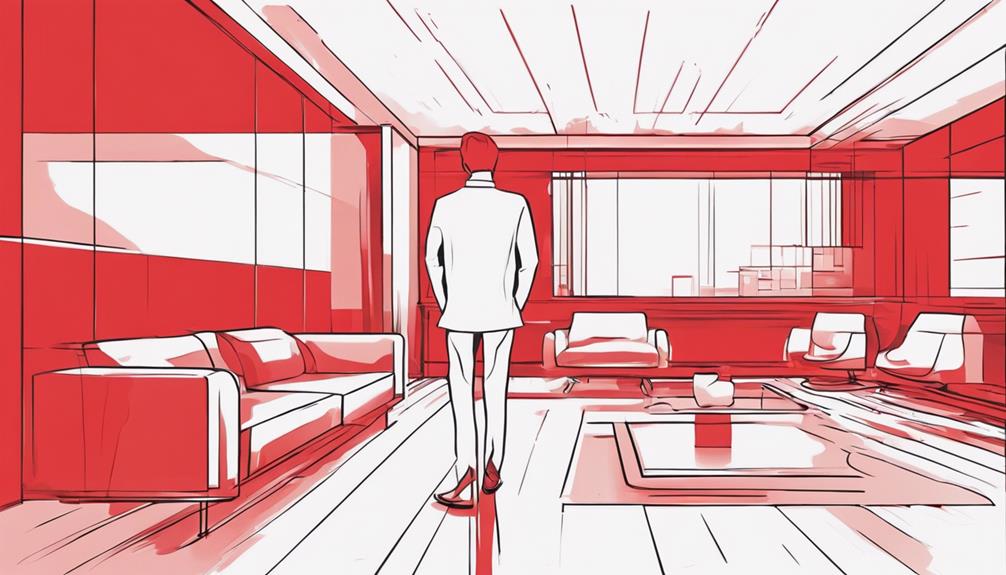
Red elicits intense emotional responses, including feelings of love, passion, and anger. This vibrant color has a profound impact on our emotions and behaviors. When exposed to red, individuals often experience heightened arousal, with increased heart rates and feelings of excitement. Red is frequently used to capture attention, convey urgency, or signal danger due to its association with strong emotions. Research suggests that viewing the color red can lead to enhanced physical reactions, such as improved performance in physical activities. Additionally, red has been linked to increased appetite and stimulation, making it a popular choice in food advertising and restaurants.
| Emotional Response | Description |
|---|---|
| Love | Red is commonly associated with love and romance. |
| Passion | The color red often evokes feelings of passion and intensity. |
| Anger | Red can also symbolize anger and aggression in certain contexts. |
Psychological Effects of Orange
The color orange, known for its association with excitement, enthusiasm, and energy, is found to have profound psychological effects on individuals. Orange being a warm color, stimulates mental activity and encourages socialization and creativity. It evokes feelings of warmth, optimism, and adventure, making it a color often associated with positivity and creativity. In marketing, the color orange is strategically used to convey a sense of friendliness and confidence, aiming to attract customers with its vibrant and energetic appeal. In the realm of color psychology, orange is believed to promote a sense of fun, vitality, and motivation, making it a popular choice for brands looking to inspire action and engagement. The psychological impact of orange extends beyond its visual appeal, influencing emotions and behaviors in ways that can enhance mood and overall well-being.
Understanding Yellow's Impact
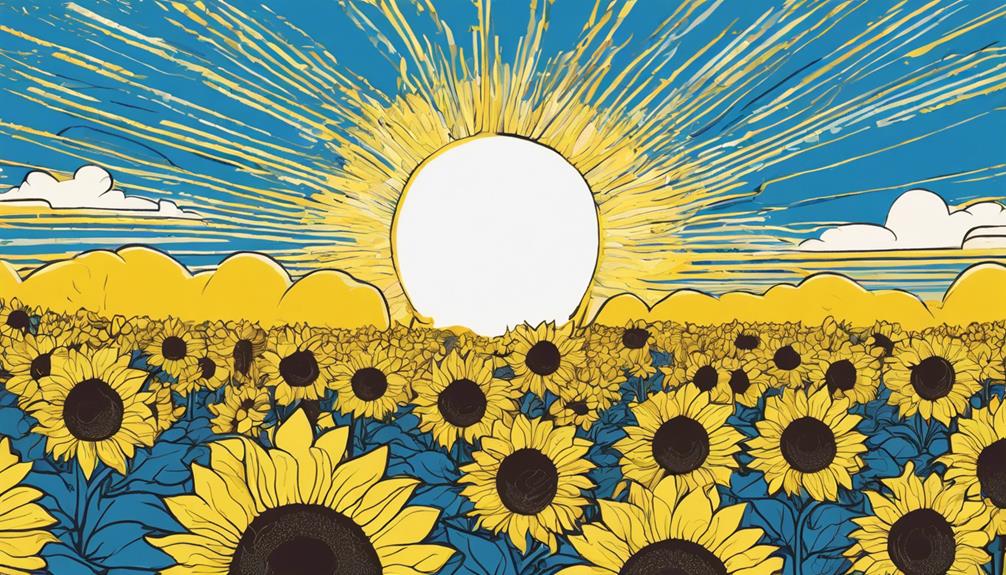
Yellow is a color known for its ability to energize mood, promote positivity, and spark creativity. Its association with joy, happiness, and optimism makes it a powerful tool in enhancing emotional well-being. Understanding the impact of yellow can lead to greater insights into how color influences our emotions and behaviors.
Yellow Energizes Mood
Energizing and mood-lifting, the color yellow is strongly linked to feelings of joy, happiness, and enhanced communication. Yellow's impact on emotions is profound, as it can stimulate mental activity, enhance creativity, and boost optimism. In various settings, the presence of yellow is known to create a cheerful and vibrant atmosphere, contributing to an overall sense of well-being. Additionally, exposure to yellow light has been shown to increase serotonin levels, which play a crucial role in regulating mood and emotions. By incorporating yellow into our surroundings, whether through decor or lighting, we can harness its energizing properties to uplift our mood and promote a positive outlook on life.
Yellow Promotes Positivity
How does the color yellow influence our emotional state and promote a sense of positivity in various aspects of life? Yellow, known for evoking joy, happiness, and optimism, plays a significant role in fostering a positive outlook. This vibrant color is associated with creativity and energy, stimulating mental activity and encouraging innovative thinking. Yellow's ability to boost energy levels and create a sense of warmth and friendliness makes it ideal for social interactions. Moreover, studies indicate that yellow can enhance concentration and focus, making it a suitable choice for workspaces and study environments. In marketing, yellow is often utilized to captivate attention and convey enthusiasm, further highlighting its impact on promoting positivity and optimism.
Yellow Sparks Creativity
In the realm of cognitive psychology, the color yellow has been recognized for its profound impact on cognitive processes, particularly in relation to creativity and problem-solving abilities.
- Yellow is associated with creativity, optimism, and intellect, stimulating mental activity and innovation.
- Research suggests that exposure to yellow can enhance concentration, memory retention, and problem-solving skills.
- Yellow is known to evoke feelings of happiness, energy, and positivity, boosting mood and motivation.
- The color yellow is often used in environments like classrooms and workspaces to promote productivity and idea generation.
- Incorporating yellow accents or decor can help uplift spirits, promote self-expression, and encourage a sense of optimism.
Connection Between Green and Emotions

Green, as a color associated with balance and tranquility, has a notable impact on human emotions. Its connection to nature and growth influences mood by promoting relaxation, reducing anxiety, and instilling stability. The calming nature of green is believed to evoke feelings of hope, optimism, and rejuvenation, making it a color that can positively affect emotional well-being.
Calming Nature of Green
The color green is widely recognized for its ability to induce feelings of balance, harmony, and tranquility, making it a significant factor in influencing emotional states.
- Green is associated with balance, harmony, and nature, creating a calming and soothing effect on emotions.
- Exposure to green environments has been linked to reduced stress, improved mood, and increased feelings of relaxation.
- Green color stimulates feelings of renewal, growth, and vitality, promoting a sense of well-being and emotional stability.
- Research suggests that green can enhance concentration, foster creativity, and alleviate anxiety, making it an ideal choice for spaces where focus and tranquility are desired.
- The psychological impact of green extends beyond visual aesthetics, influencing emotional responses positively and creating a sense of peace and rejuvenation.
Influence on Mood
Evident in numerous studies exploring the psychological effects of color, green's influence on mood and emotions emerges as a significant aspect worth considering in various environments. Green is associated with feelings of balance, harmony, and renewal, making it a calming and soothing color that promotes emotional balance. Exposure to green environments has been linked to reduced stress, improved mood, and enhanced emotional well-being. This color is often utilized in healthcare settings to create a sense of tranquility and aid in healing processes. Research indicates that green can evoke hope, growth, and stability, contributing to positive emotional responses. Incorporating green elements in workspaces or homes can foster serenity, creativity, and emotional balance.
| Green | Calming |
|---|---|
| Soothing | Harmony |
| Emotional balance |
Calming Effects of Blue
In the realm of emotional responses to color, the calming effects of blue stand out significantly for their ability to induce feelings of tranquility and relaxation. Blue is known to promote calmness and relaxation, making it ideal for creating serene environments. Exposure to blue light can help regulate the circadian rhythm, promoting better sleep patterns and overall mental well-being. The color blue is associated with tranquility, trust, and stability, leading to a sense of peace and security. Additionally, blue has been found to lower blood pressure and heart rate, contributing to a sense of calm and stress relief. Incorporating blue elements in surroundings can have a soothing effect on the mind, reducing anxiety and promoting a sense of balance.
- Blue promotes calmness and relaxation.
- Exposure to blue light regulates the circadian rhythm.
- Blue is associated with tranquility, trust, and stability.
- Blue lowers blood pressure and heart rate.
- Blue elements reduce anxiety and promote balance.
The Power of Purple

Purple, a color that combines the stability of blue with the energy of red, holds significant symbolic value in representing luxury, creativity, and spirituality. Historically associated with royalty, power, and wealth, purple's rarity and expense in dyes made it a symbol of high status. This color stimulates imagination, making it a popular choice in creative industries where innovation and originality are valued. Purple evokes feelings of mystery and magic, adding a touch of sophistication and elegance to any environment. By incorporating purple into decor or attire, individuals can promote a sense of balance, harmony, and spiritual growth. Its ability to encourage artistic expression and spiritual contemplation makes purple a versatile color that can inspire both creativity and introspection. Whether used sparingly for a hint of luxury or more prominently for a bold statement, purple's influence on emotions and perceptions is undeniable.
Pink and Its Playful Influence
Pink, with its soft and delicate hue, has a playful influence on our emotions. This color's ability to evoke feelings of love and tenderness can create a charming and nurturing atmosphere. Studies suggest that exposure to pink can promote relaxation and reduce aggression, making it a color with energetic yet soothing accents.
Pink's Soothing Charm
Pink's ability to evoke feelings of compassion and nurture emotional well-being makes it a valuable color choice in various environments. Research suggests that exposure to pink can have a calming effect on individuals, promoting feelings of relaxation and comfort. Pink is often used in environments like bedrooms or healthcare settings to evoke feelings of compassion, nurturing, and emotional well-being. The color pink is known to reduce aggression and promote a sense of peace, making it a popular choice in spaces aimed at fostering harmony and tranquility. Incorporating pink accents or elements can help create a playful and nurturing ambiance, enhancing emotional connections and positive interactions.
- Pink evokes feelings of compassion
- Pink promotes emotional well-being
- Pink reduces aggression
- Pink fosters harmony and tranquility
- Pink enhances positive interactions
Energetic Pink Accents
Incorporating accents of this vibrant hue can infuse an environment with a playful and energetic vibe, enriching the overall ambiance with a sense of joy and dynamism. Pink, known for its associations with love, tenderness, and optimism, can evoke feelings of compassion, nurturing, and warmth, fostering comfort and positivity. The color's soothing effect on emotions contributes to stress reduction and lower anxiety levels. Research indicates that exposure to pink enhances relaxation and promotes a lighthearted mood. By adding pink accents to decor or clothing, individuals can introduce a touch of playfulness and sweetness to their surroundings, creating an atmosphere that encourages feelings of love, compassion, and relaxation.
Brown's Emotional Warmth
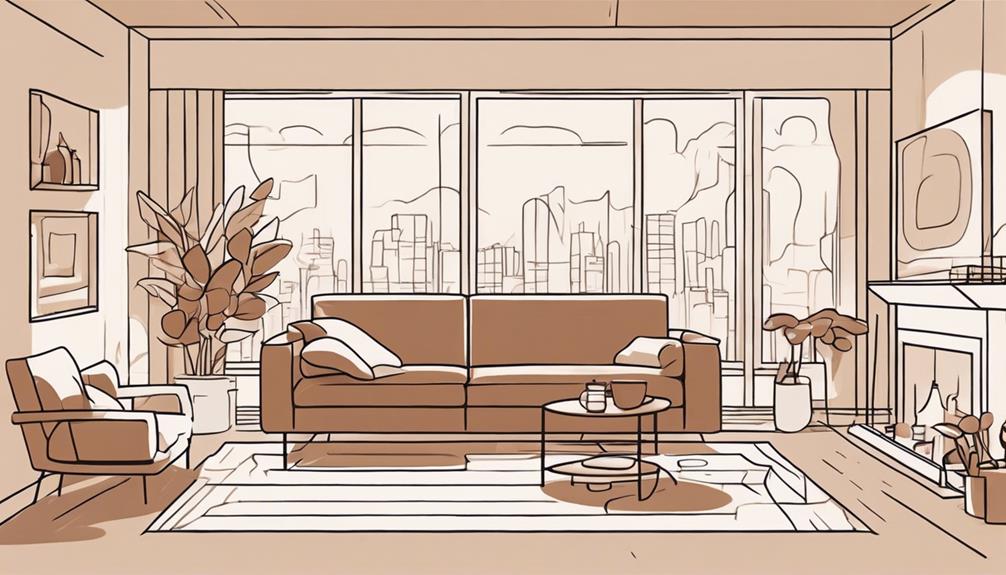
Brown's emotional warmth is deeply rooted in its associations with stability, reliability, and a down-to-earth nature, eliciting feelings of security and comfort. The earthy tones of brown evoke a sense of warmth and grounding that can have a significant impact on emotions. Here are some key points highlighting the emotional warmth of brown:
- Stability: Brown is often perceived as a stable and reliable color, providing a sense of security and dependability.
- Relaxation: The warmth of brown can create a cozy and inviting atmosphere, promoting relaxation and a feeling of being at ease.
- Nurturing Environment: In interior design, brown is commonly used to cultivate a nurturing environment that fosters a sense of belonging and comfort.
- Dependability: Brown's association with reliability and trustworthiness contributes to its emotional warmth, making it a comforting choice.
- Grounding Ambiance: The down-to-earth nature of brown influences emotions positively, making it a suitable option for establishing a welcoming ambiance that encourages feelings of comfort and security.
Significance of Black
The significance of black lies in its associations with sophistication, power, mystery, and elegance within the realm of color psychology, embodying traits of authority, formality, and strength across diverse contexts. Black is often used in fashion, luxury branding, and formal settings to evoke a sense of prestige. While it can symbolize negativity or mourning in some cultures, in others, it represents protection and comfort. Understanding the cultural nuances and context is crucial when interpreting the emotional impact of black.
| Associations | Attributes | Contexts |
|---|---|---|
| Sophistication | Authority | Fashion |
| Power | Formality | Luxury branding |
| Elegance | Strength | Formal events |
Black's symbolism of sophistication and power makes it a popular choice in high-end products and settings where authority and elegance are desired. Its versatility allows for conveying a range of emotions depending on the cultural background and context, highlighting the complexity of interpreting the emotional significance of this color.
White's Symbolism in Emotions
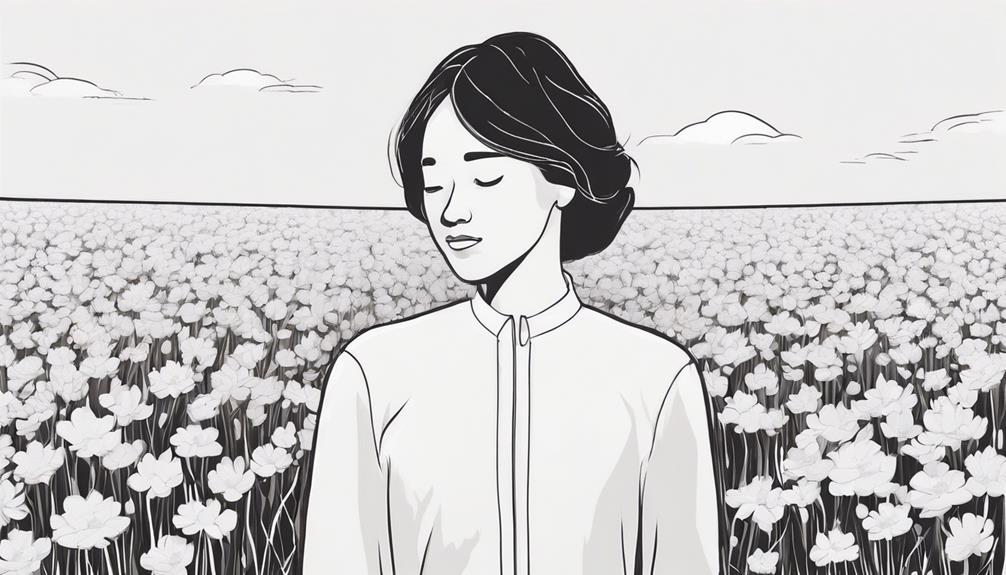
White embodies purity, innocence, and simplicity, reflecting peace, cleanliness, and new beginnings in the realm of emotions. The color white holds significant symbolism in evoking various feelings and emotions. Here are some key points on how white influences our emotional state:
- Purity and Innocence: White is often associated with purity and innocence, eliciting feelings of cleanliness and simplicity.
- Peace and Calmness: White can evoke a sense of peace and calmness, creating a serene emotional atmosphere.
- Clarity and Freshness: The color white is linked to clarity and freshness, bringing a feeling of openness and renewal to emotions.
- Neutrality and Serenity: White's neutrality can induce a sense of neutrality and serenity, providing a blank canvas for emotions to unfold.
- Space and Freedom: In emotions, white symbolizes space and freedom, offering a sense of liberation and expansiveness in one's feelings.
Understanding the symbolism of white in emotions can help individuals harness its calming and rejuvenating effects on their emotional well-being.
Gray: Professional and Reliable
Gray, known for its associations with professionalism and reliability, plays a crucial role in conveying a sense of seriousness and stability in various settings. The color gray is often utilized in business attire, office spaces, and formal environments to evoke feelings of neutrality, balance, and impartiality. Its practical and sophisticated nature enhances a sense of calmness and composure while exuding a timeless elegance that signifies authority and trustworthiness.
| Professionalism | Reliability | Neutrality |
|---|---|---|
| Sophistication | Calmness | |
| Stability | Authority |
In color psychology, gray is considered a versatile color choice that lacks strong emotional impact but is highly effective in communicating a sense of professionalism and reliability. Its neutral undertones make it a popular option for corporate branding and design, where it symbolizes sophistication and a steady, dependable nature. Embracing gray in various contexts can help establish a sense of trust and competence, making it a go-to color for those seeking to convey a serious and stable image.
Frequently Asked Questions
What 5 Colors Have the Effect on Our Emotions?
In considering the impact of colors on our emotions, it is crucial to recognize that various hues can elicit distinct psychological responses. Red increases arousal, blue promotes relaxation, yellow stimulates happiness, green induces calmness, and pink evokes feelings of warmth. Each color has a unique ability to influence our emotional state, with purple enhancing creativity, orange boosting energy levels, brown creating a sense of stability, black evoking feelings of power, and white symbolizing purity and innocence.
How Do Colours Affect Your Personality?
Colors play a vital role in shaping personality traits through color therapy, where individuals exhibit emotional reactions to different hues. These reactions are tied to color symbolism, influencing mental health and well-being. Understanding how colors affect personality involves delving into the psychological impact of various shades on individuals' behaviors and perceptions. By exploring these connections, individuals can gain insight into how color choices reflect and shape their personalities, creating environments that support their emotional needs.
What Are the 4 Psychological Colours?
The four psychological colors, red, blue, yellow, and green, hold significant symbolism and cultural associations. These colors are not only pivotal in marketing strategies but also play a crucial role in color therapy and artistic expression. Red represents emotions like love and anger, blue signifies calmness and trust, yellow symbolizes joy and energy, and green embodies balance and growth. Understanding the depth of these colors aids in creating environments that evoke specific emotional responses.
How Does Color Affect a Person's Mood Experiment?
Color perception plays a crucial role in influencing emotional responses and mood regulation. In an experiment designed to study the psychological impact of color on mood, participants exposed to red exhibited heightened arousal and valence, eliciting stronger emotional reactions. In contrast, those exposed to blue experienced decreased arousal and valence, promoting calmer emotional states. Such findings underscore the significance of color choices in affecting individual moods.
Conclusion
In conclusion, colors play a crucial role in influencing our emotions. Warm colors like red, orange, and yellow evoke energy and happiness, while cool colors such as blue, purple, and green promote calmness and security. Each color has specific emotional associations that can affect our mood and perception. The impact of colors on our emotions is a fascinating and complex phenomenon worth exploring further. How do the colors we surround ourselves with shape our emotional experiences?
